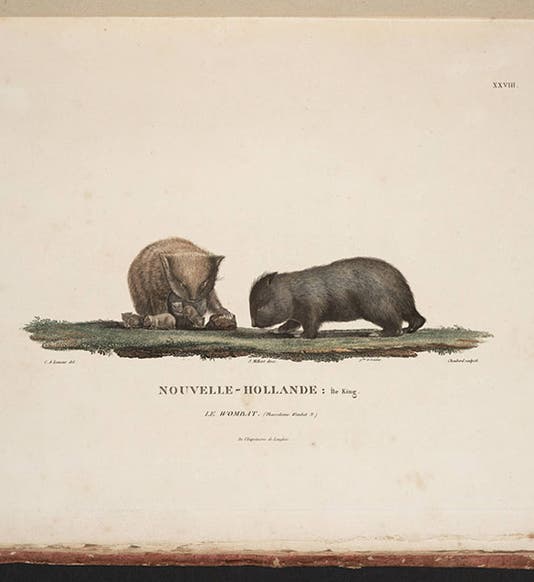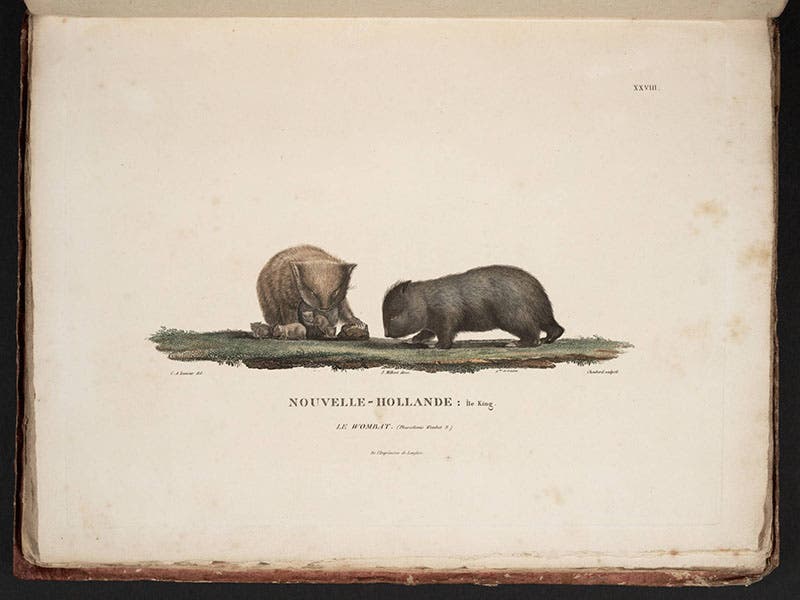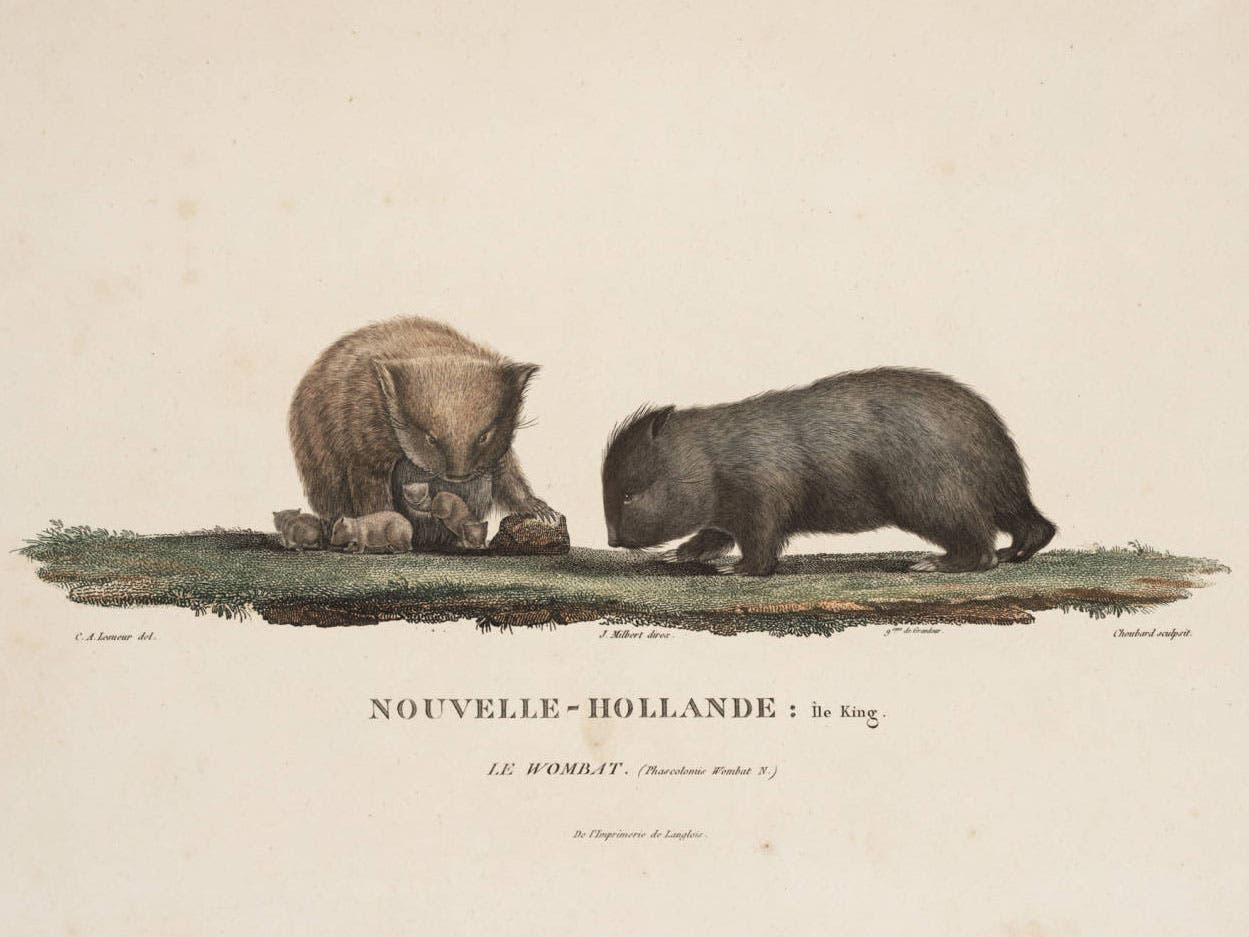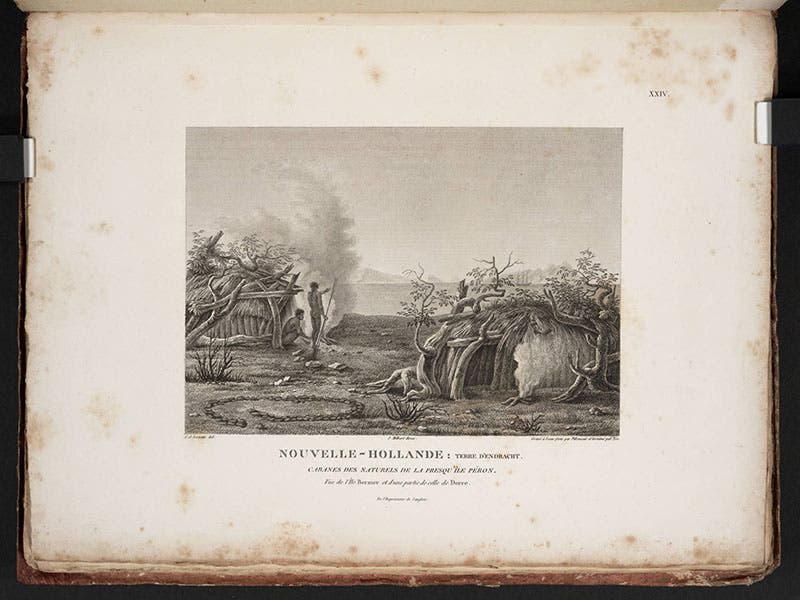Scientist of the Day - Nicolas-Thomas Baudin
Nicolas-Thomas Baudin, a French naval officer, died Sep. 16, 1803, at the age of 49. Baudin commanded a succession of scientific voyages that explored South Africa, India, and China between 1785 and 1800, but he is best remembered for his last voyage of 1800-04, during which he and his crew circumnavigated the coast of Australia. Captain Cook had discovered eastern Australia in 1770, landing at Botany Bay just south of the future Sydney, and by 1788 the British had sent their famous First Fleet to Port Jackson, laden with convicts who would begin the English colonization of New South Wales. But no one had explored western Australia, or much of the northern or southern coasts, for that matter. So that was the goal of the Baudin expedition, which set out from France in 1800 in two ships, the Géographe and the Naturaliste, with 24 scientists on board, a record for the time (and indeed for the next half-century). The voyage was very successful in a scientific sense, in that some 100,000 specimens were gathered. But in human terms, the voyage was costly, because many of the crew succumbed to scurvy and dysentery, so that, of the 24 scientists on board, only 6 returned, and two of those died within a few more years. Baudin was one of the unlucky ones; he warded off scurvy, but he died of tuberculosis at Mauritius in 1803 on the return trip.
Normally the captain of a scientific voyage was responsible for writing the narrative of the expedition and editing the zoology, botany, and geography volumes. Because Baudin died, that responsibility was assumed by Francois Péron, who began as junior naturalist and became senior by outliving all his colleagues. His Voyage de découvertes aux terres Australes began to appear in 1807 (and was completed in 1816, after Peron’s death). We have a copy of this work in our History of Science Collection.
We displayed Peron’s depictions of banded wallabies and black emus, brought back by the Baudin expedition, in our Grandeur of Life exhibition in 2009. The images above are also from Peron’s account of Baudin’s expedition and show, in order: a pair of wombats; a detail of the wombat plate; an Australian Aborigine; a view of several native canoes; and an encampment of Aborigines.
Dr. William B. Ashworth, Jr., Consultant for the History of Science, Linda Hall Library and Associate Professor, Department of History, University of Missouri-Kansas City. Comments or corrections are welcome; please direct to ashworthw@umkc.edu.











